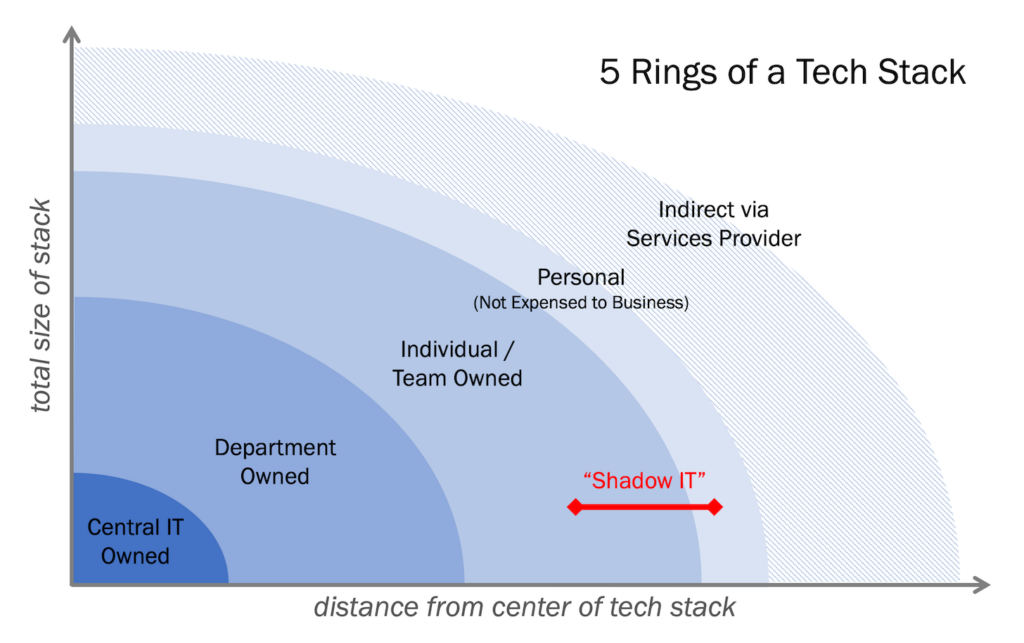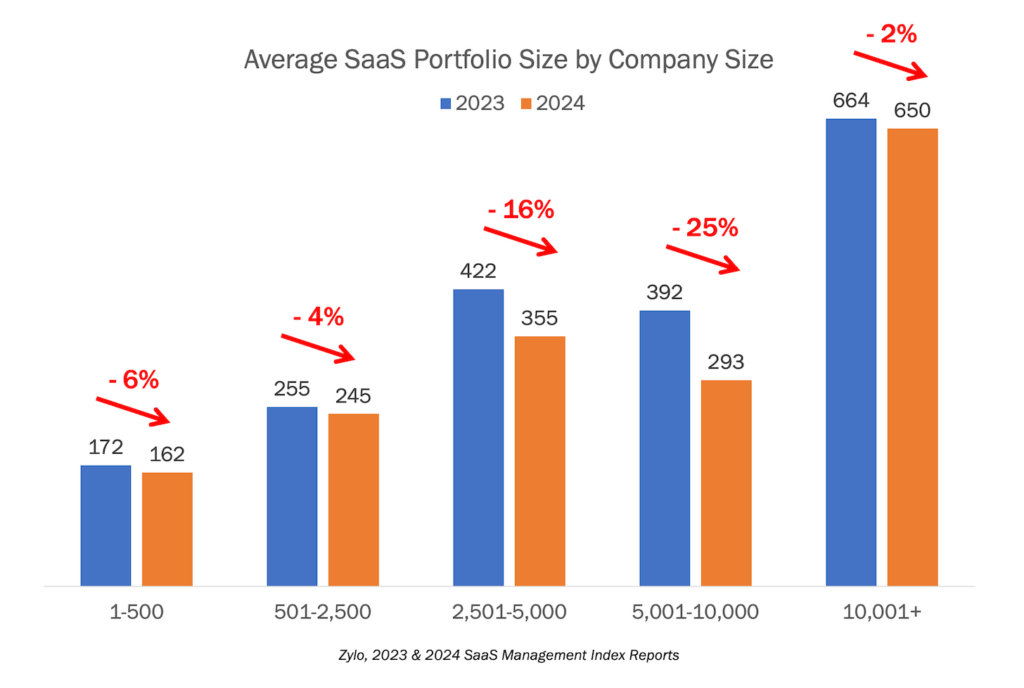The following is a guest opinion piece by Josh Dreller, VP of product marketing at 4C. Note that 4C could be characterized as a provider of “point solutions” themselves, so this opinion is aligned with their business. But as I aruged in defense of marketing technology point solutions a few years ago, consider the inverse justification too: executives align their businesses with their opinions of where the market is going.
Most marketing technology platforms fall into one of two categories:
- Point solutions specialize in solving a deep, defined subset of challenges.
- Hubs offer multiple tools in a single interface and focus on solving the “tool overload” challenge facing many marketing organizations.
Which one is right for you? Of course it depends on your unique situation but, from first-hand knowledge running technology for a digital media agency, evaluating and implementing dozens of platforms for various clients, I can tell you that hubs almost never live up to the hype.
Why?
Just look at your standard multi-tool from a hardware store. The knife is never better than a knife you can buy separately. The scissors are always small and don’t work well. Yes, you get it all in one small package, and it’s great for little tasks. But if you want to build something amazing, you’ll never be able to do it with a multi-tool.
Can you imagine a contractor passing out multi-tools to the team that’s about to build a house?
It’s too bad. The marketing hub is a great idea. Save money, cut down on time, integrated technology — all great things on paper. But it hardly ever works out that way.
In almost every instance (that I’ve either been a part of or have heard anecdotally from others), the biggest complaint you’ll hear from the marketing team after a hub purchase is that they love the core tool, but hate the rest of the stack.
Recently, a large CPG brand tested an all-in-one hub for its social marketing, but quickly retrenched back to a core point-solution strategy for its technology stack citing these key reasons:
- The vendor couldn’t keep up with innovation because they were spread across too many products and publishers.
- The customer service team was more generalists at a top-level across the expansive platform than specialists who could provide real, tactical guidance.
- All of the time saved by combining multiple channels into a single hub was then lost when the execution team experienced bugs and other issues because of the poor technology infrastructure.
Why do we often see this with hub technologies? When a company technology splits its time across a wide product set, it splits its focus. It goes from solving deep challenges to being a “mile wide and an inch deep.” Software is hard. Innovation is tough. Just getting it right can take all of a vendor’s time and resources. Now that the development team has been split from solving one challenge and are asked to solve multiple, the results will correlate.
Even worse, the issues that come with putting all of your eggs in the hub basket are exacerbated over time. Maybe in Year 1, the functionality you lose with point solutions is evened out by the hub benefits, but by Years 2 and 3, there’s no way that the individual parts of the hub can stay competitive with the innovations brought forth by the entire rest of the field.
Eventually, you’re working with sub-par tools when there are best-in-class technologies available.
In the Forrester Research brief Buy Social Point Solutions, Not Social Suites, analyst Nate Elliot begins by definitively stating: “More than two-thirds of avid social marketers believe it’s more effective for them to buy all their social tools from a single vendor than to buy social point solutions from several different vendors — but they couldn’t be more wrong.”
In the report, Nate lists multiple reasons why this is the case, but one of the strongest pieces of evidence of his expert opinion shows that just 64% of marketers who use “social suites” (hubs) feel their platforms’ features and functionality live up to what was promised. However, 92% of marketers say their point solutions do.
This same line of thinking applies beyond the social media space to other categories of marketing technology. There are certainly good hubs out there — Gartner recently did an exhaustive review of this category — but generally, I favor the ones who have built multiple tools organically over time and then bring them together into a single platform. This way, each product has had full lifecycles and development focus to mature.
If you’re thinking about bringing in a hub to replace your point solutions, make sure that it’s going to do more than just replace a few point solutions. Evaluate these technologies closely and get your practitioners involved in the decision making. You can never ask too many questions.
For my money, technology is too important for successful marketing today — and too disruptive if you gamble on a poorly evaluated choice. You could end up burning many man-months as you pivot back to your point solutions after a failed attempt at switching to a hub.
So before you start cutting tools, make sure the knife in your multi-tool is sharp enough for the job.
Thanks, Josh. Readers: do you agree or disagree? I’d love to hear your opinion in the comments below. Counterpoint opinion pieces are also solicited.





Well said, Josh. But don’t forget the importance of sharing data and processes across solutions. Marketers need excellent functionality. which means functionality that matches their particular needs, which is what picking the right point solution gets you. But they also need that functionality connected; great silos are still silos. So part of the requirements when picking point solutions needs to be working well with other tools. In practice, this means a core platform to integrate and expose shared data, point solutions with open APIs to consume and provide that data, and (much harder to find) a way to orchestrate customer experiences across the point solutions. And, sad to say, you might have to trade those off against each other, which could mean rejecting a functionally superior point solution if it doesn’t play nicely with others.
Well said, David!
Good points, David. The upside on good hubs (not all hubs are good hubs) is the potential for tool interconnectivity (data, workflow, reporting, etc.). It’s fantastic if you can find it.
My point-of-view for this post is purely based on my experience as a practitioner who has used both types of technologies. It’s never 100% for point solutions and 0% against hubs, but I’ve found the negative tradeoffs of going all in on a hub outweighed the positives — especially in the three ways I identify here: lags in innovation as resources are spread thin, lack of deep product expertise from the main points of contact, and ultimately the poor product execution that negates the efficiency that drove you to the hub in the first place.
Product integration is great, but if the sum of the parts is sub-par versus what you can get from point solutions, then you just have a suite for suite’s sake. I’d rather be able to drive marketing outcomes and goals really well channel by channel than get average results from an optimized, integrated hub.
This doesn’t make sense to me. Why would you possibly want to use a point solution in social! Using a point solution in social is like going to multiple super markets to buy your groceries – who does that!?
There are so many touch points that social has on the consumer, without a holistic view, combining all the data the brand marketers will have no idea what is happening…oh wait they would after they spend hours and hours pulling reports together to view it all *face palm*.
Consolidation in Mar-tech will happen over the next few years as the point solutions will realise they wont be able to compete with the social hubs and the only way they can is by coming together to form a “frankenstein”.
Thanks, RB. Your comment echoes David’s above as well — the value of having the data connected is significant.
Interesting that you make this point in the context of “social hubs”. I think Josh’s argument is more about broader digital marketing hubs, of which a social hub would just be one piece.
Of course, in theory that’s even better, right? Not only all your social data and insights and activation mechanisms in one spot, but have it all integrated with your website, your email, your mobile app, your ecommerce system, your display advertising, your search engine optimization, your content marketing, etc.
But that’s where I find Josh’s “realmartek” (the equivalent of realpolitik in marketing technology) view resonates: that seems like an awfully big Tower of Babel to build and maintain.
Well, there is also a case for the contrary, where companies have created a messy network of best-in-class point solutions, but would be far better off consolidating on one of the marketing clouds.
I see large organizations that have un-intentionally built-up a hugely complex network of best-in-class but mostly disconnected digital marketing solutions: Many moons ago the website people selected the best web content management system they could find. A year later the email marketers selected the best email marketing system they could find. Then the iPhone came along – and the mobile taskforce built apps and picked a mobile CMS. A few years after that, social media took off and the new social team selected their best listening and publishing platform. Somewhere in between, search advertising grew and marketing selected a SEM tool. Along the way, a business unit selected an eCommerce solution and started selling on-line. Given the need for insights in all of this, IT was asked to build a complex marketing data warehouse. Oh yes, and after the initial implementation, each of these teams have switched to the next and better technology every 4-5 years.
Eventually, after 10-15 years of incremental selections, the company ended up with a complex collection of best-of-breed marketing technologies – but it is starting to hurt. Why? Here some key reasons:
1. Customer-centricity: The need to identify and connect with customers across channels and personalize across channels requires deep integration between channel technologies, something that is pretty much impossible for most to cobble together themselves. Imagine you have a SiteCore CMS, Eloqua for Email, Marin for SEM, DoubleClick for display, and Sprinklr for Social. To track a customer across those, or trigger personalization across them, you’d have to build integrations. Can it be done? Sure. Is it hugely complicated? You bet.
2. Data-driven marketing. Not only do we need to connect customer journeys across channels, to effectively target and personalize, it is also critical to leverage as much customer segmentation data as possible, from as many sources as possible, both internal from eCommerce and purchased from third parties. A central DMP is becoming a fundamental component of the marketing stack – but tying all this customer data together from disparate platforms and pushing it out is again a huge custom data integration effort.
3. Insights. Traditionally each channel has its own specialized channel-analytics – which makes it difficult to track customer journeys. In response companies put additional integrated marketing analytics and attribution solutions on top – adding yet more technologies to the already complex mix.
4. Usage. During the regular RFI-RFP selection process companies are all too tempted to select ‘the best’ of something. Yet if you look a few years after implementation, I often see that the actual usage is limited to a small sub-set of all these ‘best’ features – and that the advanced skills needed to do advanced processing are no longer present in the company.
5. Cost. While the plain license costs of marketing cloud solutions might not be less than the sum of the best-practice licenses, the cost of integrating, operating and maintaining all these components is likely to exceed those of a marketing cloud.
So in the end, I think that to enable today’s customer-centric, cross-channel, data-driven digital marketing, it is more effective for many companies to consolidate as much as possible on one of the marketing clouds, and leverage their integration, even if that means that for some components they settle for ‘good enough’ versus ‘the best’. The integration within those marketing clouds is admittedly far from perfect or complete, but the pace at which it is being improved by the vendors is much higher then what companies could hope to do on their own with best-practice components.
One exception to this view however would be for the largest, most advanced digital marketers that are truly pushing the capability envelope of best-practice technologies and have the scale and the staff to go over and beyond what the marketing clouds can offer. Amazon comes to mind. The biggest banks and Telco’s. The largest retailers. Not many others.
Thanks for the great counterpoint, Robert!
My one counter-counterpoint, which I’ve been thinking about a lot lately, is that the marketing world is objectively complex today. In computer science terms, we’d call this “essential complexity” — the very kinds of things that marketers want to do across all these different touchpoints, all of which are in continuous flux, are complex.
Therefore, any solution meant to address all of modern marketing is going to be complex — whether it’s a single “cloud” that internalizes all that complexity or a collection of best-of-breed applications that externalize that complexity.
I think that essential complexity is going to be a challenge for vendors and marketers for a very long time. Even if you purchase a single marketing cloud, I am skeptical at the effort that will be required to achieve customer-centricity, data-driven marketing, insights, high utilization, and optimized total cost of ownership.
Robert, the holy grail aproach you’ve described is what drove me to hubs in the first place. I felt exactly the same way as you feel now and moved my teams to hubs that I thought could solve all of my problems (literally the same ones you described). I simply just didn’t find that hubs could actually deliver on all of these things and eventually they ended up frustrating and distracting the marketers using them.
I admit, “customer-centric, cross-channel, data-driven digital marketing” hub technology seems great (and in theory, should lead to incredible marketing results). However, because these tools never truly deliver and due to all of the other uncontrollable variables (the constant changes in consumer behavior, the lighting pace of tech innovation, marketers located across geographies with specialized channel expertise, etc.), my blanket advice to anyone on this topic is to let each team optimize their part of the marketing puzzle with the tools that they – the experts and actual users – feel are the right tools for the job.
My advice? Coordinate your people and efforts via a strong, centralized marketing strategy and shared data/insights as the marketing integration layer. Then look for key, technology intersection points to invest in to solve specific gaps versus big technology that promises “customer-centric, cross-channel, data-driven digital marketing”. Hubs hardly every deliver what dreams they sell you, frustrate your people, and eventually become outdated in two years.
In my humble opinion, nimble and adaptable point solutions that you can rip and replace as needed beat overly engineered systems which are hard to move away from. On paper, hubs seem efficient and the right way to go. Ask anyone who is 4 years into a hub purchase and see what they say.
I’m often struck in this debate by how binary it has become: it’s a cloud/hub/suite or it’s best-of-breed. But there’s so much more nuance to it than that, generally and within the specific context of each unique marketing organization. And I’ve yet to find a company in which it’s 100% one or the other so no matter what, it’s an intellectual argument at best. When one gets into the practicalities of the debate, the diversity comes into play.
For example, I’ve heard marketers who think working primarily with one vendor is great because it gives them “one throat to choke” so to speak and allows them to assert some leverage because of how much they spend with that vendor. On the other hand, I’ve heard other marketers express concern about LOSING leverage because the vendor knows that the switching costs would be so high that the brand won’t take their business elsewhere.
This discussion also treats point solution functionality and interoperability as entirely separate priorities; in other words, marketers compartmentalize their vendor evaluation criteria with for the marketing purpose and then the integration separately. As a result, integration is typically treated as an after-thought or nice-to-have rather than something as critical as, say, deliverability for ESPs or testing accuracy for optimization tools. This is largely and understandably due to a knowledge gap that quite frankly, it behooves a lot of vendors on both “sides” of this debate to uphold — even though it really obfuscates what’s important today which is both kinds of capabilities.
While tools like customer data platforms help advance the objective of finding that right balance unique to each brand of unified, actionable data and best-in-class functionality, we’re still quite green as an industry when it comes to taking this from intellectual and abstract debate to concrete and applied action.
Very good point, Cory. It’s definitely not black-and-white. There’s a wide continuum with a lot of trade-offs that vary by vendor and customer. Thanks for articulating the pragmatic reality!
Thank you Cory